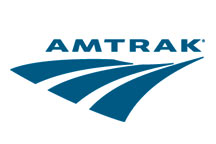
Mayor Jim Ardis delivered his “State of the City” address today (the transcript is available on the City of Peoria website), and he had a big announcement to make about the “Peoria Promise” initiative:
Last year, at this State of the City address, I asked our city to dream big dreams and consider a program called Peoria Promise. Based on a similar program in Kalamazoo, Michigan, and recently successfully emulated elsewhere, Peoria Promise would enable any student graduating from Peoria Public Schools to be eligible for a college scholarship. Today, I am excited to announce the first step in Peoria Promise – a guarantee that eligible high school graduates qualify for up to 100% tuition while working towards a degree or certificate at Illinois Central College.
We are very fortunate to have Illinois Central College in our community, and they have
been extraordinarily helpful to us on this project. I’ll touch on a few of the details, and
there will be more information available through ICC to all who are interested.
- Peoria Promise is offered to City of Peoria residents who graduate from one of the following high schools: Manual, Central, Woodruff, Richwoods, Dunlap, Limestone and Peoria Alternative. Tuition will be provided based on a sliding scale determined by how long the student attended Peoria Public schools. Those attending all 12 years receive 100% funding. This is based on the philosophy that those children and families who reside in the City the longest and attend the public schools the longest should reap the greatest benefit.
- Peoria Promise will begin funding the tuition scholarships with the high school graduating class of 2008.
- Applications will be made on-line at ICC’s website during January through March of each year.
- Students must have a minimum two point zero grade point average following each semester at ICC to maintain eligibility.
- In addition, Peoria Promise will pay tuition at other community colleges for students who choose programs not offered at ICC.
As Ardis said, this is a program inspired by the Kalamazoo Promise, on which I have done some research in the past (here , here and here).
The two biggest benefits of Kalamazoo’s program are:
- First and foremost, it rewards kids who stay in school and graduate by giving them a free college education (in Kalamazoo’s plan, they provide a free four-year education at a state school for kids who went to Kalamazoo public schools K-12).
- But secondly, it provides an incentive for people to move back into the school boundaries, thus increasing the student population (which gets them more federal and state funding) and pushing up housing sales/property values in the city.
The thing that makes Peoria, and thus Ardis’s plan, different from Kalamazoo’s is that Kalamazoo has just one public school district that, as far as I can tell, is coterminous with the city’s boundaries. In Peoria, you can live within the city limits and attend one of three public school districts: Peoria, Dunlap, or Limestone. In fact, Ardis notes elsewhere in his speech that 70% of Dunlap school students live in Peoria.
The problem is that District 150 is the one public school district in Peoria that really needs this Peoria Promise program more than any other. That’s the district that is losing enrollment. That’s the district that serves the older neighborhoods in town that desperately need building up. I don’t believe Dunlap is having any trouble attracting residents to live within its district boundaries or getting kids to graduate from its schools; nor do the families who live in the north end have trouble affording ICC.
Th mayor’s plan will provide the first (and arguably most important) benefit to District 150 — i.e., rewarding those kids who stay in school and graduate. So, I’m not saying the plan is bad. However, it will not provide the second big benefit: drawing people back into its school boundaries. It won’t do anything to even-out the “haves and have-nots” divide in this community between those who can afford to live in Dunlap schools’ district versus those who can’t. It won’t attract anyone to move into District 150 boundaries who wouldn’t have moved into those boundaries anyway.
Thus, I’m rethinking the “Peoria Promise” as the mayor has outlined it. I think what Peoria needs instead is a “District 150 Promise” — a program based on the Kalamazoo Promise, but only for District 150. Some may argue that Ardis is the mayor of the whole city, and thus he can’t discriminate in favor of one school district. But he’s already “discriminating” (if you will) against students who go to private, parochial, or home schools. What’s the difference?
Besides, he’s not looking for public funding for this initiative, but private funding. Someone with a million dollars to invest in our community could stipulate that it be used only toward those within District 150’s boundaries.
So that’s my challenge. Let’s put this educational investment where it’s needed most.
 I was happy to hear Ardis say this in his State of the City address today:
I was happy to hear Ardis say this in his State of the City address today:
